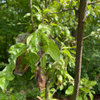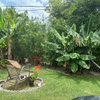Level of difficulty of various fruits in Southern MD
lindsgarden
13 years ago
Related Stories

KITCHEN STYLESNew Southern Style for the Kitchen
Gracious tradition is alive and well, bless its heart, but Southern kitchens are welcoming in modern updates too
Full Story
INSPIRING GARDENSNative Plants Bring 10 Southern California Front-Yard Gardens to Life
Rare plants, rain gardens and wildlife habitats are just a few of the features showcased on the 2016 Theodore Payne Native Plant Garden Tour
Full Story
EDIBLE GARDENSSummer Crop: How to Grow Blueberries
Plant blueberries in spring or fall for garden beauty through three seasons — and a sweet superfood in summer
Full Story
FRUIT TREESHow to Grow Your Own Persimmons
Sturdy and easy to care for, these trees offer bright fruit through winter — and keeping them in bounds is no sweat
Full Story
SPRING GARDENINGSummer Crops: How to Grow Strawberries
Pluck your own sweet strawberries right from the garden vine for smoothies, salads or eating then and there
Full Story
GARDENING FOR BIRDSWild Birds Transform a Woman’s Garden and Life
How Sharon Sorenson created a wildlife haven and became the Bird Lady of Southern Indiana
Full Story
FARM YOUR YARDHow to Grow Vegetables in Containers
Get glorious vegetables and fruits on your patio with a pro’s guidance — including his personal recipe for potting mix
Full Story
PETSHouzz Call: Show Us Your Pet Projects!
Bubble windows, fountains, doghouses, showers — what outdoor treats have you put together for your furry friends?
Full Story
MATERIALSInsulation Basics: What to Know About Spray Foam
Learn what exactly spray foam is, the pros and cons of using it and why you shouldn’t mess around with installation
Full Story
CONTRACTOR TIPSYour Complete Guide to Building Permits
Learn about permit requirements, the submittal process, final inspection and more
Full StoryMore Discussions









austransplant
Scott F Smith
Related Professionals
Windham Landscape Architects & Landscape Designers · Belmont Landscape Architects & Landscape Designers · Prairie Ridge Landscape Architects & Landscape Designers · Maple Heights Landscape Architects & Landscape Designers · Annandale Landscape Contractors · Deerfield Landscape Contractors · Ellicott City Landscape Contractors · Gurnee Landscape Contractors · Leicester Landscape Contractors · North Ridgeville Landscape Contractors · Stallings Landscape Contractors · Wanaque Landscape Contractors · West Chester Landscape Contractors · West Chicago Landscape Contractors · Selma Landscape Contractorsfoolishpleasure
olga_6b
marknmt
lindsgardenOriginal Author